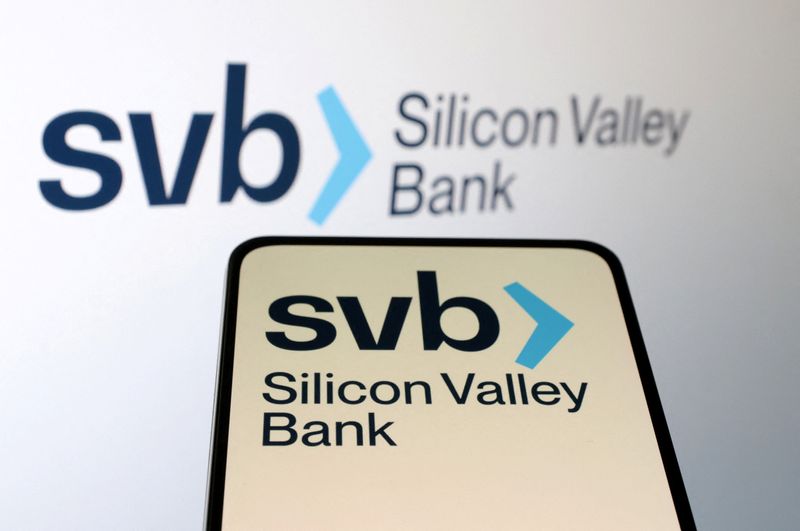(Reuters) -The swift downfall of SVB Financial Group, the biggest collapse of a bank since Washington Mutual in 2008, has sparked fears of contagion in the financial sector and affected every asset class from stocks to forex.
Bank stocks globally saw hundreds of billions of dollars wiped away from their market valuation in the aftermath of the collapse, which also shook the startup community the Santa Clara, California-based bank was mainly lending to.
Below is a timeline of key events:
Date Development
March 8, 2023 SVB says it intends to raise $2.25 billion in
common equity and preferred convertible stock
after it sold a portfolio of US Treasuries and
mortgage-backed securities at a $1.8 billion
loss
March 9, 2023 SVB clients pull their money from the bank on
the advice of venture capital firms such as
Peter Thiel's Founders Fund, sources tell
Reuters, leading to $42 billion of deposit
withdrawals on that day
March 10, 2023 A California regulator shuts Silicon Valley
Bank and appoints the Federal Deposit
Insurance Corporation (FDIC) as receiver to
take control of its parent company, according
to the agency's statement
March 11, 2023 Employees of Silicon Valley Bank offered 45
days of employment at 1.5 times their salary
by the regulator FDIC, according to an email
to staff seen by Reuters
March 12, 2023 "Depositors will have access to all of their
money starting Monday, March 13," the U.S.
Treasury, Federal Reserve and FDIC say in a
statement, adding that no losses associated
with the resolution of Silicon Valley Bank
will be borne by the taxpayer
March 13, 2023 The defunct holding company says it is
planning to explore strategic alternatives for
its businesses and names William Kosturos as
its chief restructuring officer.
President Joe Biden vows to take action to
ensure the safety of the U.S. banking system.
March 14, 2023 SVB says that
Goldman Sachs (NYSE:GS) acquired the bond
portfolio
on which it booked a $1.8 billion

loss, a transaction that set its failure in
motion.